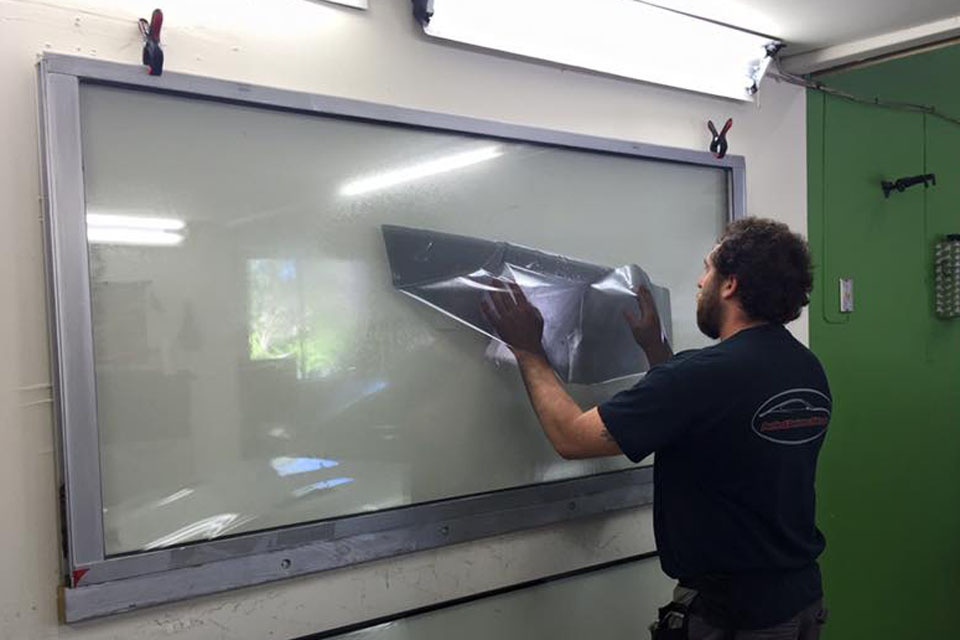
Thanks to innovations in window film technology, today’s drivers can get the functional benefits of a dark tint without the darkening aesthetic. Photo: American Ratings Corporation (2016)
Window tint can make a car look cooler, but did you know it can also make a car literally cooler? Fortified with light- and heat-rejecting properties, tint (aka film) blocks incoming solar energy from entering car windows, keeping the interior environment more comfortable and protecting drivers from harmful UV rays.
Unfortunately, California’s legal limits on tint darkness can make it challenging to get these benefits where you need them most—namely, your windshield and front side windows. Furthermore, some vehicle owners like the idea of tint’s functional attributes but aren’t crazy about its darkening effect. So, what’s a conscientious driver to do?
Thanks to recent innovations in industry technology, vehicle owners now have a solution to these quandaries. Today, there are cutting-edge tint products that offer the practical perks of dark tint without the dark aesthetic.
A premier example of this pioneering innovation is 3M™’s Crystalline window film series. Utilizing a breakthrough multilayer nanotechnology, these films maximize visible light transmission while filtering out the more pernicious byproducts of solar energy. Despite being thinner than a Post-it® note, 3M Crystalline films are comprised of more than 200 layers of optical film designed to selectively reflect the bulk of UV and infrared rays. In fact, Crystalline films reflect more heat than many of the darkest tints available.
Another unique attribute that makes 3M Crystalline films so effective is their unique on-angle heat rejection capability. In the morning and evening hours, sunlight hits a car windshield at a 90-degree angle, but during mid-day, when the sun is directly overhead, it radiates at an acute 60-degree angle, which creates greater heat intensity. Crystalline films are specifically designed to reject more heat when the sun is at its apex, so they’re most effective during the hottest part of the day.
3M Crystalline films are available in five variations: 40, 50, 60, 70 and 90, with the numbers denoting each film’s approximate percentage of visible light transmission (the amount of light they let in). Each film provides 99.9 percent UV rejection and 97 percent infrared heat rejection (except the 90, which provides 90 percent heat rejection). Each film also provides respective levels of heat, glare and solar energy reduction.
So, whether you’re concerned about keeping your car street legal or want to stay cool without the “cool” look, the light shade of a 3M Crystalline film can give you the best of both worlds.
